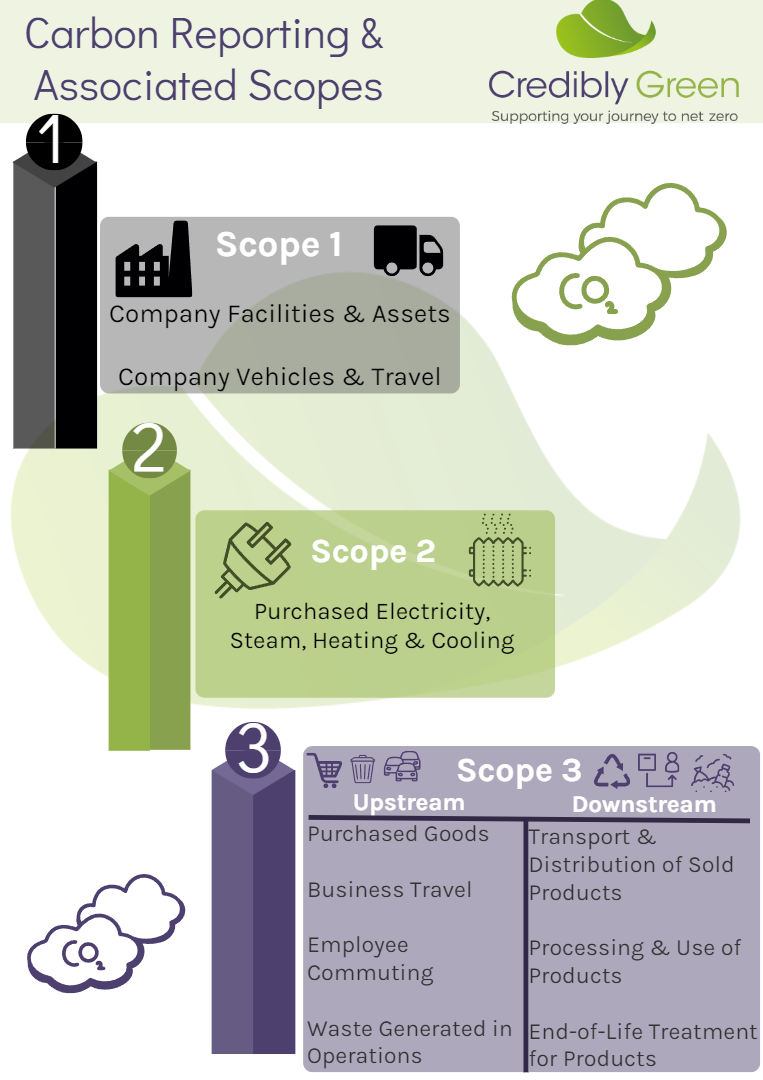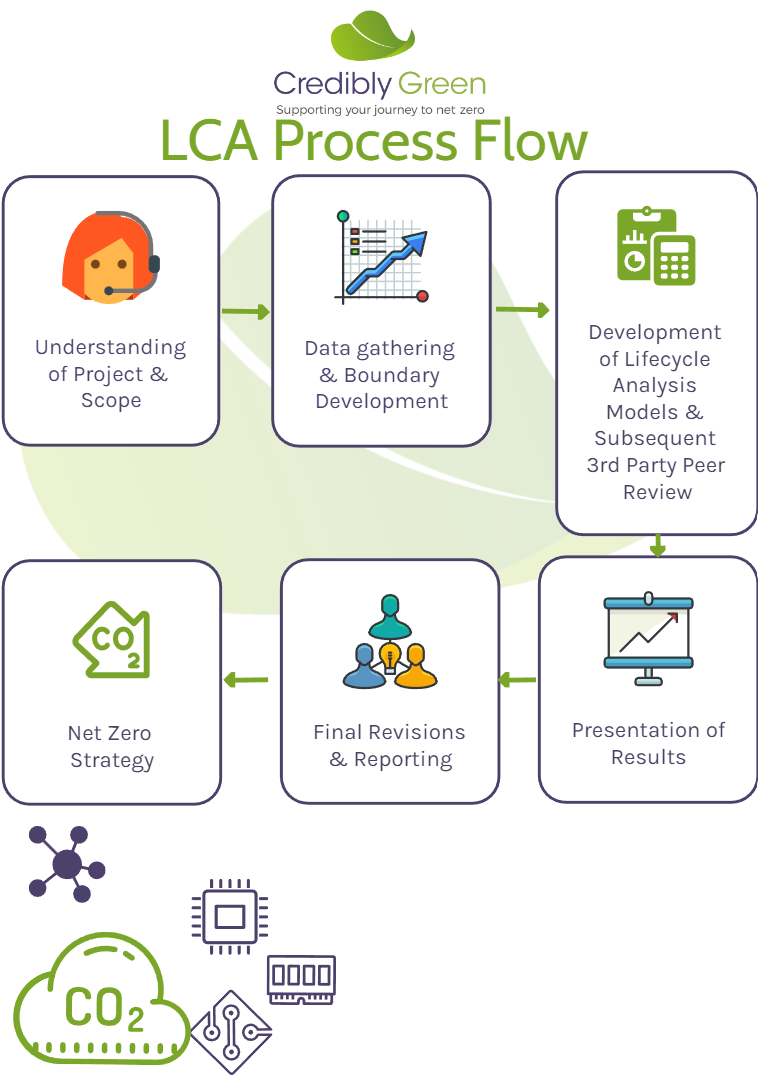Frequently Asked Questions
What is a carbon footprint?
As our awareness of climate grows, so does the desire to do something about it. The first step is to understand what our current impact is, through carbon footprinting.
A carbon footprint is a measure of the impact, in relative units of carbon dioxide (CO2), that our activities have on the environment. This includes the products we use, or the activities that we undertake. It all has an environmental impact.
How does Credibly Green measure my company’s emissions?
Credibly Green measure emissions by taking a snapshot in time of the greenhouse gas emissions emitted by your activities (according to the specified scope (1,2,3)). This includes looking at energy usage (gas, electricity), water, waste and transport.
What do we mean by Scope 1, 2 and 3 emissions?
Scope 1, 2 and 3 emissions are a way of categorising the Green House Gas (GHG) emissions a company emits through its own operations and its supply chain. These are as follows:
Scope 1 emissions – The emissions that a company generate directly (such as running boilers, vehicle travel, waste generate)
Scope 2 emissions – These are the emissions that a company is responsible for indirectly, for example, the purchase and use of electricity, steam, heating and cooling.
Scope 3 emissions – This includes all other indirect emissions that occur from activities both upstream and downstream of an organisation.

What is an LCA?
A Life Cycle Assessment (LCA) is a procedure for measuring the environmental impact of a product or service through its entire life cycle, from the raw materials extracted to manufacture or create a product, through to what happens at its end of life.
Every product or service has its own individual life cycle based on a variety of aspects such as design, sale, purchase, consumption, recycling and disposal. Carrying out an LCA is vital for understanding the full environmental impact. This process also includes ‘Embedded carbon’ – see below for a definition.
Embedded carbon, or embodied carbon, is the amount of carbon that is emitted during the construction or delivery of a product, good or service across its lifetime. As an example of the embedded carbon within the built environment, this includes the emissions from raw material extraction, material transportation, manufacturing and installation of materials and for any materials wasted in the construction of a building or infrastructure.

Why should my company measure its carbon footprint?
There are many reasons why your business should undertake its own carbon assessment. This includes:
– To reduce greenhouse gas emissions in support of tackling climate change
– To set a pathway towards net zero
– To meet expectations of your customers
– To influence or respond to demands of your supply chain
– To manage and control costs
– To adapt and futureproof your offering
– To improve resilience
– Attract and retain suppliers
– Attract and retain staff
– To support an environmental management system
– Boost your company brand and ethos
– Anticipate legislative changes
– To reduce potential future liabilities
What is the right level of support for us/you?
Want to build on your journey but not sure where to start? Credibly Green have developed three services to support businesses. This includes:
We have a team of friendly advisors on hand to chat through your questions and to help you find out which support would be best for you.
What is a Net Zero Action Plan?
The term Net Zero refers to the action of a achieving a net balance of the amount of the greenhouse gas emission emitted by organisation and the amount removed from the atmosphere. There are two ways that businesses, organisations and individuals can achieve net zero, firstly by reducing existing emissions and secondly by actively removing any remaining greenhouse gases.
An action plan allows you to prepare and deliver for Net Zero. At Credibly Green, we work with you to draft ambitious, yet achievable strategies and action plans with key milestones and deliverables along the way. We use useful metrics to help you to track progress and enable you to report on the progress with time.
